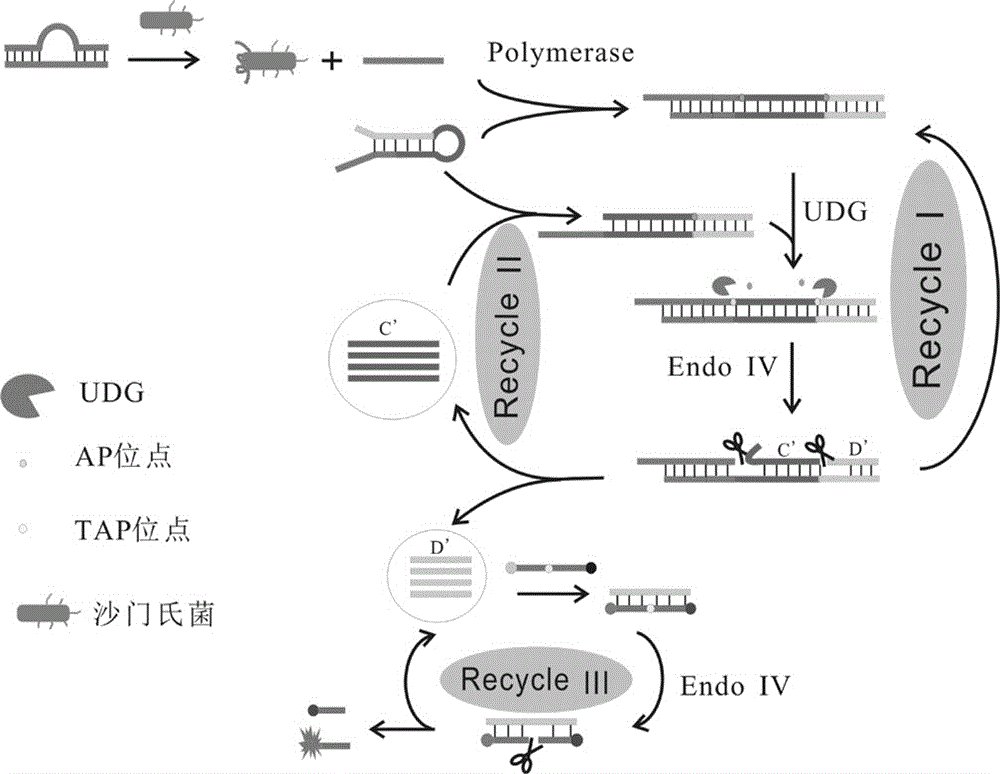Method for detecting salmonella with fluorescence method on basis of enzymatic remediation isothermal cycle amplification
A cyclic amplification and Salmonella technology, applied in the field of detection, can solve the problems of long detection cycle, low specificity and sensitivity, etc., and achieve the effects of fast detection speed, improved sensitivity and improved reaction speed
- Summary
- Abstract
- Description
- Claims
- Application Information
AI Technical Summary
Problems solved by technology
Method used
Image
Examples
Embodiment 1
[0037] The preparation method of described fluorescent biosensor comprises the following steps:
[0038] (1) Add sterilized water, 10× buffer (buffer), 1 μL of 20 μM aptamer chain and Trigger chain to the pre-prepared sterilized EP tube; shake for 30 seconds, incubate at 95°C for 5 minutes, and slowly cool to room temperature;
[0039] (2) Add 1 μL of target bacteria to the EP tube (the concentration is 10 6 cfu / mL, 10 5 cfu / mL, 10 4 cfu / mL, 10 3 cfu / mL, 10 2cfu / mL), UDG (1 μL), 10 μM HAP (1 μL), 10 μSignalprobe (1 μL), endonuclease IV (1 μL), BstDNA polymerase (1 μL) and dNTP (1 μL), shake for 30 seconds, and place in a 37°C incubator Incubate in medium for 2h;
[0040] (3) Dilute the above-mentioned reacted solution (10 μL) to 70 μL, and detect the fluorescence at 518 nm with a fluorometer;
[0041] The excitation wavelength of the fluorescence instrument is set to 486nm, the emission wavelength is 518nm, the detection range is 450nm-530nm, and the change of the fluor...
PUM
 Login to View More
Login to View More Abstract
Description
Claims
Application Information
 Login to View More
Login to View More - R&D
- Intellectual Property
- Life Sciences
- Materials
- Tech Scout
- Unparalleled Data Quality
- Higher Quality Content
- 60% Fewer Hallucinations
Browse by: Latest US Patents, China's latest patents, Technical Efficacy Thesaurus, Application Domain, Technology Topic, Popular Technical Reports.
© 2025 PatSnap. All rights reserved.Legal|Privacy policy|Modern Slavery Act Transparency Statement|Sitemap|About US| Contact US: help@patsnap.com

